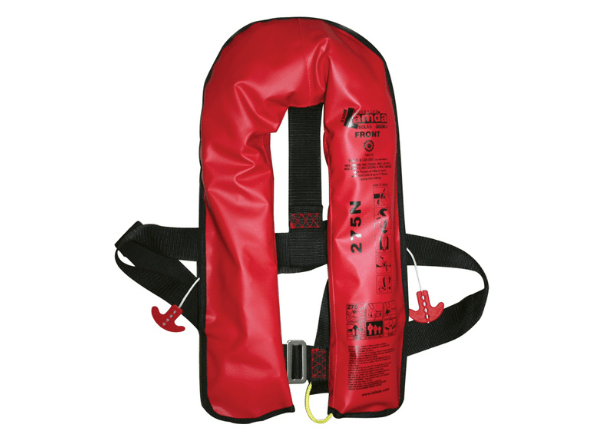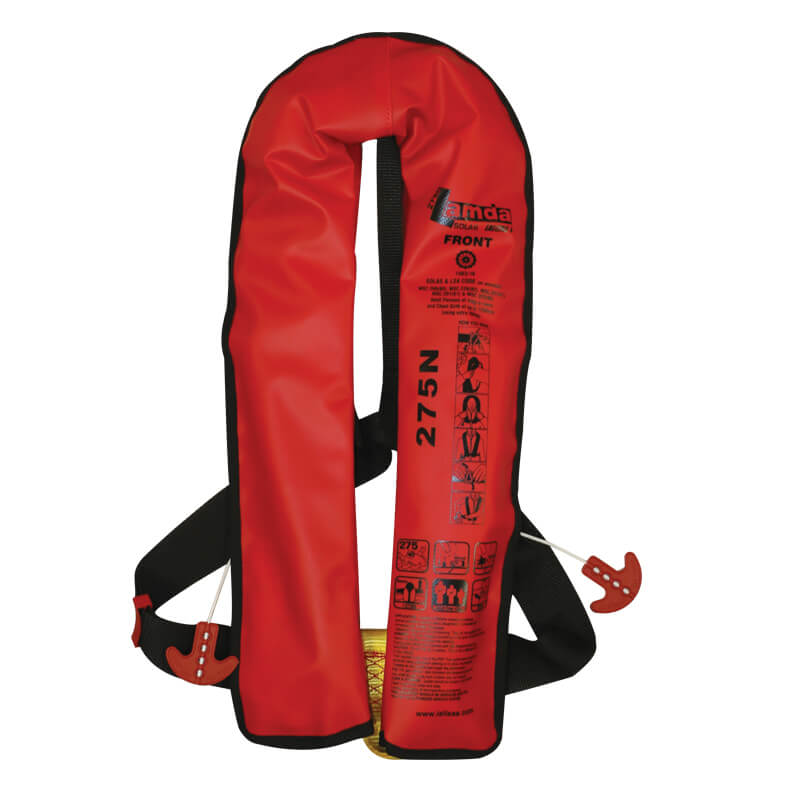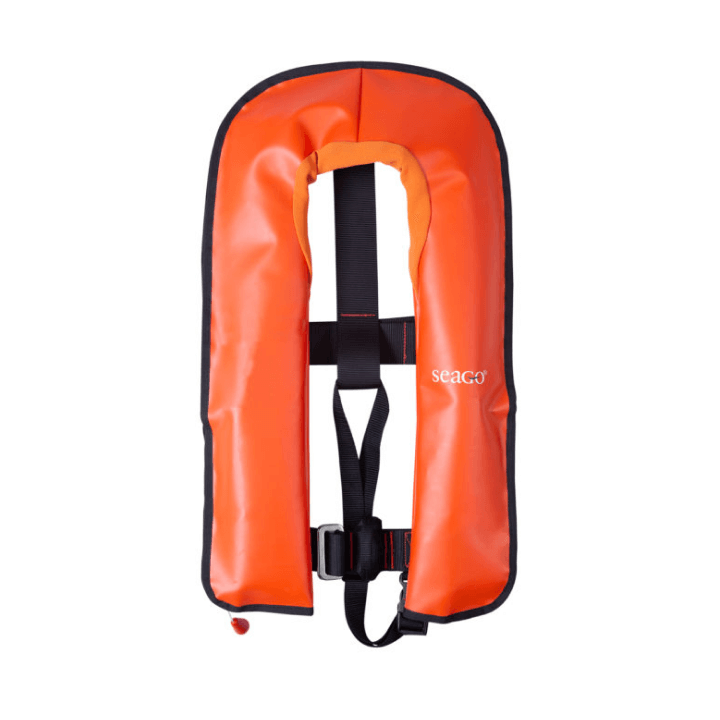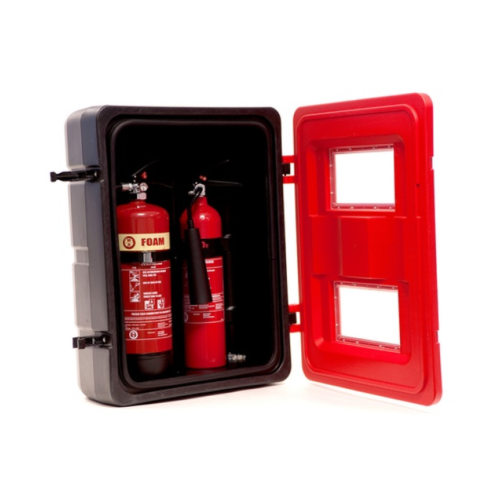In an emergency situation, there is not enough time to learn the proper operation of lifesaving equipment. Therefore it is advised that the user has practiced beforehand, in order to become familiar with the use and features of the lifejacket. It is vital that the lifejacket is correctly adjusted in order to fit the user.
- In order to don your lifejacket follow the below steps:
- Remove the lifejacket from the storage bag. Unfasten the stainless steel interlocking buckle.
- Wear the lifejacket as you would wear a jacket.
- Fasten the buckles.
- Tighten the waist belt.
- If the model of the lifejacket has a crotch strap, follow the steps below:
a) Pass the strap between the legs and fasten the buckle.
b) Adjust the strap.
To prevent the lifejacket from riding up on the wearer when in the water, it is vital that the straps are properly adjusted. This may prevent the wearer from being able to maintain their nose or mouth face up above the water surface.
In an emergency situation, if needed, enter into the water with your feet first while holding the lifejacket.
Donning instructions are also printed on the outer cover of each model.
After donning, locate the manual lever for the mechanism; it should protrude from the lifejacket! Make sure that you are comfortable locating it with either hand. Be prepared to use it in case of emergency! Always wear your lifejacket over clothing, not under clothing.
Caution: Clothing and equipment may affect the ability of this lifejacket to turn the wearer to a face-up position in the water. Due to mission specific configurations, we recommend self-testing under controlled conditions to confirm adequate performance. Make sure you practice on closing the hardware and on adjusting the straps before use or prior to in-water testing.
Inspection process
Make sure that the lifejacket is free from rips, tears or punctures. This type of damage on the outside covering indicates that the Inflatable Chamber/s may have been exposed to potentially damaging elements. If these defects expose the yellow inflatable chamber/s material, discontinue use of the lifejacket until you have the lifejacket inspected by an authorised repair facility. If these defects are noticed but the yellow inflatable chamber/s material is not exposed, the Inflatable Chamber/s should be checked for leaks.
Cylinders:
Regarding the cylinders attached to the inflator mechanism, please perform visual periodic inspection. In case there is any of the below:
• dent
• scratches
• corrosion on the cylinder
• or even used and not replaced,
then contact Star International to perform service of the lifejacket.
For models with zipper closure:
The zipper has precut teeth to different determined location by manufacturer and these areas are protected /hidden by a black hook and loop patch. It is forbidden to cut or damage additional zipper teeth.If that happens then the lifejacket should be discarded.
In case the zipper has dents, cracks, missed teeth, damaged zipper slider or the zipper slider is stuck then contact Star International to perform service of the lifejacket.
Make sure that the whistle are attached and that retroreflective tapes SOLAS have no signs of deterioration.
All damage to the materials, such as tears, abrasion, cuts on the cloth or webbing, color change or damage to the buckles, that would affect the buoyancy by overheating, UV sun damage, incorrect storage or use,etc can lead to a life threatening reduction in safety offered by the product. All such products should be removed from use. If in doubt, contact Star International.







